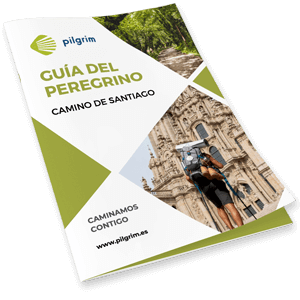The Codex Calixtinus

Index
What is?
The Codex Calixtinus,is considered one of the most important documents of the Christianity. and a truly guide for The Way of St James.
The Codex is currently protected at Santiago’s Cathedral. But it wasn’t there always.
Chapters
- The First Parchment: It is the longest one and collects liturgic texts that were specially created to be read in the Cathedral.
- The Second Parchment: Known as The Book Of The Miracles, relates the 22 miracles of St James before being beatified.
- The Third Parchment: Illustrates the evangelization mission of St James and his disciples, as well as his death and the transfer of his remains to The Stellae Campus, located in Iria Flavia.
- The Fourth Parchment: Turpin’s Chronicle.It is composed by 26 chapters where heroic deeds made by characters such as Charlemagne or the Muslim King Aigolando are related. We can also find many important events such as the Roncesvaux Battle or when St James had appeared to Charlemagne, inspiring strength and courage before the Muslim Incursion
- Last but not least: we find the famous Pilgrim’s Guide In this book we can find some advices for future pilgrims such as where to stay, where to eat and, of course, things they should take into account while they are traveling the different routes.
Appendix
Attached to this part, we can find the Real Jewel in this part: The Polyphonic Corpus This is the first polyphonic written document. We can observe music notes on a tetragram using a disystemic notation or for intervals.
In the rest of the Codex , we can find music as well , specially in the first book, this time under an monodic style.

The Discovery
Despite of being a vital document, it was lost for many years in the archives of The Cathedral , being rediscovered in the second half of the 19th century.
It is visually deteriorated as it was often used up to 16th century and constantly modified adding new parchments
The discoverer was the archivist of the Cathedral, Antonio López Ferreiro, who helped both with the restoration and the campaign to bring it to light It was therefore under the protection of the archivers and scholars of the temple for more than 800 years.
The robbery and the recovery of the Codex Calixtinus
The Codex disappear from the safe in 2011. After several weeks of investigation in July 2012, a discovery revealed that the electrician in charge of the maintenance of the Cathedral was in fact the thief. This wasn’t his unique robbery as many documents and money were found at his home.
After the recovery, The Codex became very popular, so taking advantage of this sudden interest, an itinerant exhibition was created as an opportunity to making known this singular book.
To this day no expert was able to decode the riddles hidden inside this millennial document. It is nowadays guarded under heavy security at Santiago’s Cathedral.


